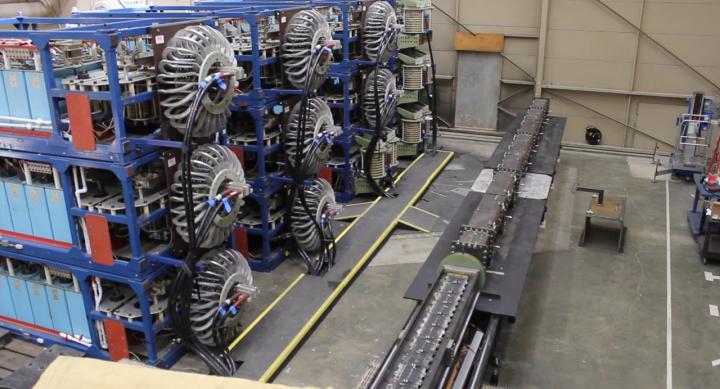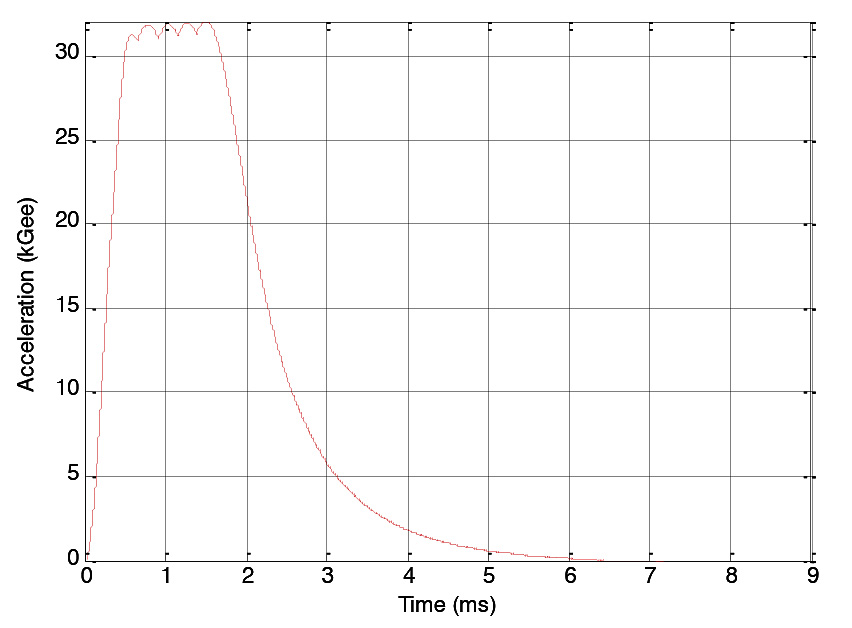
EM Launch: Testing electronics at a whole new level
As miniature electronics and other small devices continue to find their way into new and sometimes harsh operational environments, shock testing or acceleration testing of these devices has become more important for quantifying and demonstrating operational reliability.
A recent article, “Measuring and Simulating Bombs Bursting in Air”, discusses several different methods of shock or acceleration testing of hardware. This article mentions electrodynamic shakers that can generate up to a few thousand G acceleration, drop towers that can produce up to 20,000 G accelerations, and pyrotechnic methods utilizing shaped charges and primer cord that can generate accelerations up to 100,000 G. It also discusses a larger system using pneumatically actuated sleds on tracks that can accelerate large masses that generate the impulse loading upon impact. These impacts can be tuned by using different materials at the impact point. All of these methods for shock testing produce a high frequency, 100 Hz to 100,000 Hz, acceleration profile that has many reversals as the impact energy decays.

As discussed in the article, MGA Research simulates pyroshocks mechanically using a tunable resonant fixture that is excited by a pneumatic impact. This type of shock testing is extremely useful and many applications require this transient acceleration profile, but there are other shock (acceleration) type applications where this transient type test is not representative and a single cycle, more controlled acceleration profile is required.

Figure 2. Typical Acceleration Profile for an EM Launcher System
For those applications where a fast, high frequency, acceleration oscillation is not applicable, an alternative approach that provides a controlled pulse shape with a single acceleration rise and a controlled decay is electromagnetic (EM) launch. An example of where a single, high amplitude acceleration is applied would be the launch of a bullet or larger projectile. An EM launcher, or railgun, utilizes a high transient current pulse to magnetically accelerate a sliding armature. The drive force of the armature can be utilized to accelerate a test article. Railgun performance is well characterized and understood with very tunable amplitudes and rise times for the acceleration profile. This type acceleration profile, shown in figure 2, is very different from the shock testing discussed previously. The rise time and duration at peak of the acceleration profile can be tailored to meet operational requirements for the test article. A good example of where this type of acceleration testing is important is the development of miniature, gee hardened, electronic packages that are required in today’s smart and guided munitions. Unlike the pyrotechnic or impact shock testing where the test article remains stationary when the impact energy has decayed to zero, EM launch acceleration testing imparts a velocity on the test article. If the test article requires post-shock inspection to verify its operational condition, then the accelerated test article must be stopped utilizing a “soft-catch” recovery system to prevent damage during deceleration. This soft catch recovery is a demonstrated capability and can be tuned to accommodate different masses at different velocities. The University of Texas Center for Electromechanics performs this type of testing and research that can accommodate different size test launch articles combined with a tunable soft catch recovery system for post test inspection.

Information

Contact
Mr. Jon Hahne
j.hahne@cem.utexas.edu
512-232-1610
Projects

Soft Catch
Railgun performance is well characterized and understood with very tunable amplitudes and rise times for the acceleration profile.

